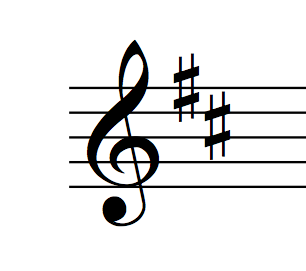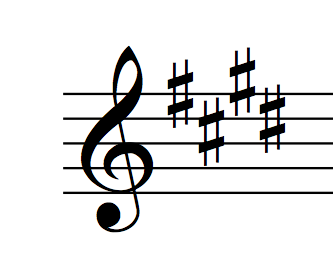Hi,
It’s me again. Today we will talk about key signatures. I divided this topic in 4 articles, to make it easear to understand.
First of all, I strongly encourage you to play each melody, since music theory is all about reading AND understanding AND playing AND hearing!
In this previous post we saw how to construct major scales. As you can see, it involves a lot of ♯ and ♭...
We are going to rationalise the use of these symbols!
I'm going to talk about major key signatures, but in fact, each key signature corresponds to a major scale AND a minor scale. We will talk about that later.
In the Key of...
Take that simple melody :
All notes belong to the C major scale, the melody begins and ends on C: we say that this piece is in the key of C.
For the moment, remember this simple rule :
If all notes belong to the C major scale AND the melody begins and ends on C, THEN the melody is in the key of C major.
Of course, if all notes belong to the F major scale, and the melody begins and ends on F : we say that this piece is in the key of F major. And so on...
Changing the key
Let’s have another look at this simple melody:
What happens if we want to write it a whole-tone higher ?
The process is simple: take each note, have a look at your piano keyboard, find the note located a whole-tone higher, and you're done! (for more details about whole-tone, semi-tone, have a look at this post )
The corresponding flat tool is this one:

It is located in the menu "Select". You can test it so as to get to know how it works.
In the key of D
So... ...we get this second simple melody:
As you can see, each E became F♯ and each B became C1 : that’s a lot of ♯ to write (and read) !
If you look carefully at this melody, you realise that all notes belong to the D major scale, the melody begins and ends on D.
According to the rule we can say that this piece is in the key of D major.[1]
Since all F are in fact F♯ and all C are in fact C♯, we could just say, right at the beginning of the piece :
“You reader should know that from now on, every single F written on the staff has to be read/played as an F♯, and every single C written on the staff has to be read/played as a C♯”
This instruction is called a “key signature” (in this case : key signature of D major) , and it is notated like this:

The key signature is written immediately after the clef at the beginning of each line.
We now have a new way of notating our simple melody in the key of D:
To add (or change) the key signature with flat, use the key signature tool in the measure menu:

Note that the two previous examples sound the same, but are notated slightly differently, thanks to the key signature.[1:1]
In the key of E
Let’s do the same thing with our simple melody, but this time, in the key of E major.
So we start with the original one:
and we modify it (we write/read/play each note two whole-tone higher):
As you can see:
-
each D became F♯
-
each E became G♯
-
each A became C♯ and each B became D♯
that’s a lot of ♯!!
All notes belong to the E major scale, the melody begins and ends on E.
And again, according to the rule we can say that this piece is in the key of E major.[1:2]
Since all F are in fact F♯ , all G are in fact G♯ , all C are in fact C♯ and all D are in fact D♯, we can just say, right at the beginning of the piece:
“You reader should know that from now on, every single F written on the staff has to be read/played as an F♯ , every single G written on the staff has to be read/played as an G♯, every single C written on the staff has to be read/played as an C♯ and every single D written on the staff has to be read/played as an D♯.”
Again, this instruction is called a “key signature” (in this case : key signature of E major) , and it is notated like this :

With the key signature, we get this:
Isn't it lighter?
To remember:
-
A key signature is a set of sharps (or flats) written immediately after the clef at the beginning of each line.
-
The purpose of a key signature is to simplify the notation.
To do:
-
Try to start a new score, in the key of C (no sharps, no flats), write a D major scale (D - E - F♯ - G - A - B - C♯ - D) , and then change the key signature (D major : 2 sharps). What happens to the sharps you first wrote?
-
Try to start a new score, in the key of C (no sharps, no flats), write a Db major scale (D♭ - E♭ - F - G♭ - A♭ - B♭ - C - D♭) , and then change the key signature (D♭ major : 5 flats). What happens to the flats you first wrote?
Once you are done with the exercises, you will be ready to dive into the next articles of this series:
-
Key signatures 1/4
Have a nice day,
Sebastien
